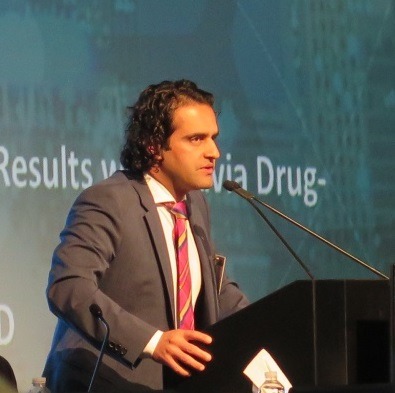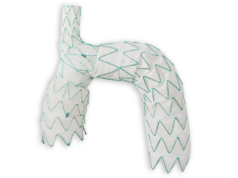
Despite improved outcomes in recent drug-coated balloon trials, standard balloons still have an important and complementary role to play in treating superficial femoral artery (SFA) disease, said S Hinan Ahmed, San Antonio, USA, at the 2016 New Cardiovascular Horizons annual conference (1–3 June, New Orleans, USA).
Recent drug-coated balloon trials have produced encouraging results. Ahmed pointed to the IN.PACT SFA randomised trial, in which Medtronic’s IN.PACT Admiral paclitaxel-coated balloon achieved 78.9% primary patency at two years, compared with 50.1% with a standard balloon (p<0.001). Freedom from clinically-driven target lesion revascularisation at two years was also improved with the drug-coated balloon, at 91% compared with 72.2% for the standard balloon (p<0.001).
Similarly, the LEVANT 2 trial, which analysed the performance of the Lutonix drug-coated balloon (Bard), found a one-year primary patency rate of 73.5% compared with 56.8% for a standard balloon (p=0.001). At two years, the Lutonix balloon group achieved 58.6% primary patency rate, compared with 53% for standard balloon (p=0.05). Composite safety was 78.7% for Lutonix at two years and 70.9% for plain balloon angioplasty (p=0.08).
Based on this data, Ahmed said he believes that “drug-coated balloons are good, the data are very good and I think they have great utility and a great future”.
Despite these positive drug-coated balloon results, “I do not think that drug-coated balloons can answer all of the questions completely,” Ahmed suggested, which is why “balloon angioplasty use is growing”, especially as a pre-dilation method for drug-coated balloon deployment.
One important reason for this is the mechanism of action of plain balloons, in that they break the plaque, helping the drug permeate the vessel wall. Ahmed explained that balloon angioplasty produces complete endothelial denudation in the dilated area with regrowth of the endothelial cells within seven days. It “creates a tear that extends through the internal elastic lamina and into the media, often followed by necrosis of the smooth muscle cells and damage to the normal architecture of the elastic fibres. The tear or fracture of the intimal plaque and adjoining media is usually necessary for a successful procedure,” Ahmed continued.
The smaller profile of plain balloons, compared with that of “slightly bulky” drug-coated balloons, means that it is easier to navigate calcified and tortuous lesions—plain balloons, Ahmed suggested, help to “pave the path”. Non-compliant balloons can also concentrate maximum dilation force at the resistant lesion, allowing for infiltration without the risk of overexpansion, while balloons with embedded nitinol or other cutting and scoring designs create further dissections to help drug permeation—“the job of the drug-coated balloon is not to expand the lumen, it is to deliver the drug.”
“The two types of balloons complement each other,” Ahmed concluded. “When using a drug-coated balloon you always want to dilate the lesion first, and that is where plain balloons come into play.”












